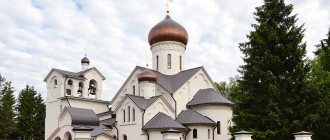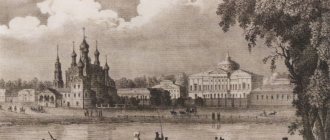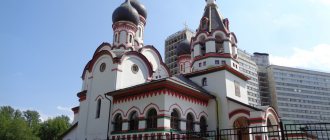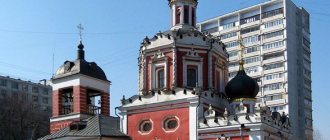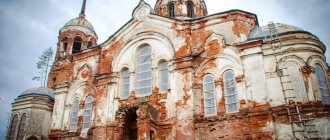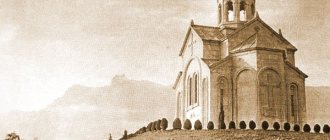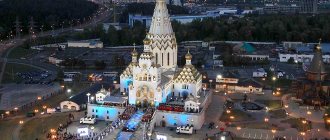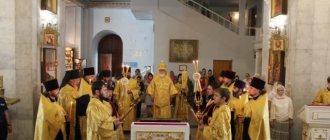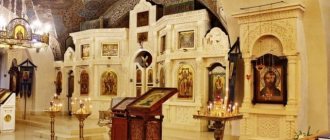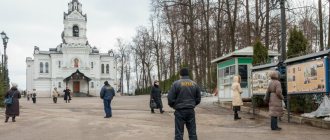Mir
Russia Tver Region Tver Cathedral of the Life-Giving Trinity (White Trinity) Map is loading…
{"format":"leaflet","minzoom":false,"maxzoom":false,"limit":50,"offset":0,"link":"all","sort":[""], "order":[],"headers":"show","mainlabel":"","intro":"","outro":"","searchlabel":"\u2026 \u0441\u043b\u0435\ u0434\u0443\u044e\u0449\u0438\u0435 \u0440\u0435\u0437\u0443\u043b\u044c\u0442\u0430\u0442\u044b","default":"","import-annotation":false,"width ":"auto","height":"350px","centre":{"text":"","title":"""link":"""lat":56.85628059999999805995685164816677570343017578125,"lon": 35.88735559999999935598680167458951473236083984375,"icon":""},"title":"","label":"","icon":"","lines":[],"polygons":[],"circles":[ ],"rectangles":[],"copycoords":false,"static":false,"zoom":8,"defzoom":14,"layers":["OpenStreetMap"],"image layers":[] ,"overlays":[],"resizable":false,"fullscreen":true,"scrollwheelzoom":true,"cluster":false,"clustermaxzoom":9,"clusterzoomonclick":true,"clustermaxradius":80, "clusterspiderfy":true,"geojson":"","clicktarget":"","showtitle":true,"hidenamespace":false,"template":"","userparam":"","activeicon": "","pagelabel":false,"ajaxcoordproperty":"","ajaxquery":"","locations":[{"text":"\u003Cb\u003E\u003Ca href=\"/palomnik/%D0% A1%D0%BE%D0%B1%D0%BE%D1%80_%D0%A2%D1%80%D0%BE%D0%B8%D1%86%D1%8B_%D0%96%D0%B8% D0%B2%D0%BE%D0%BD%D0%B0%D1%87%D0%B0%D0%BB%D1%8C%D0%BD%D0%BE%D0%B9_(%D0%91%D0 %B5%D0%BB%D0%B0%D1%8F_%D0%A2%D1%80%D0%BE%D0%B8%D1%86%D0%B0)\» title=\»\u0421\u043e\ u0431\u043e\u0440 \u0422\u0440\u043e\u0438\u0446\u044b \u0416\u0438\u0432\u043e\u043d\u0430\u0447\u0430\u043b\u044c\u043d\u0 43e\u0439 (\u0411\u0435\u043b \u0430\u044f \u0422\u0440\u043e\u0438\u0446\u0430)\»\u003E\u0421\u043e\u0431\u043e\u0440 \u0422\u0440\u043e\u0438\u0446\u04 4b\u0416\u0438\u0432\ u043e\u043d\u0430\u0447\u0430\u043b\u044c\u043d\u043e\u0439 (\u0411\u0435\u043b\u0430\u044f \u0422\u0440\u043e\u0438\u0446\u0 430)\u003C/a\u003E\ u003C/b\u003E\u003Chr /\u003E\u003Ca href=\"/palomnik/%D0%A1%D0%B2%D0%BE%D0%B9%D1%81%D1%82%D0%B2%D0% BE:%D0%90%D0%BD%D0%BD%D0%BE%D1%82%D0%B0%D1%86%D0%B8%D1%8F\» title=\»\u0421\u0432\u043e \u0439\u0441\u0442\u0432\u043e:\u0410\u043d\u043d\u043e\u0442\u0430\u0446\u0438\u044f\»\u003E\u0410\u043d\u043d\u043e\u0442 \u0430\u0446\u0438\ u044f\u003C/a\u003E: \u043f\u0430\u043c\u044f\u0442\u043d\u0438\u043a \u0438\u0441\u0442\u043e\u0440\u0438\u0438 \u0438 \u04 30\u0440\u0445\u0438\u0442 \u0435\u043a\u0442\u0443\u0440\u044b, \u0441\u0430\u043c\u043e\u0435 \u0434\u0440\u0435\u0432\u043d\u0435\u0435 \u0438\u043 7\u0441\u043e\u0445\u0440\ u0430\u043d\u0438\u0432\u0448\u0438\u0445\u0441\u044f \u043a\u0430\u043c\u0435\u043d\u043d\u044b\u0445 \u0437\u0434\u0430\u0 43d\u0438\u0439\u0433\u043e\ u0440\u043e\u0434\u0430. \u0412 \u0445\u0440\u0430\u043c\u0435 \u043d\u0430\u0445\u043e\u0434\u0438\u0442\u0441\u044f \u0440\u0430\u043a\u0430 \u044 1\u043c\u043e\u0449\u0430\u043c \u0438 \u043f\u0440\u0435\u043f\u043e\u0434\u043e\u0431\u043d\u043e\u0433\u043e \u041c\u0430\u043a\u0430\u0440\u0438\u044f \u041a\u0430\u043b\u044f\u0437 \u0438\u043d\u0441\u043a\u043e\u0433\u043e.","title":"\u0421\u043e\u0431\u043e\u0440 \u0422\u0440\u043e\u0438\u0446\u044b \u0416 \u0438\u0432 \u043e\u043d\u0430\u0447\u0430\u043b\u044c\u043d\u043e\u0439 (\u0411\u0435\u043b\u0430\u044f \u0422\u0440\u043e\u0438\u0446\ u0430)","link": "","lat":56.85628059999999805995685164816677570343017578125,"lon":35.88735559999999935598680167458951473236083984375,"icon":""}],"im ageLayers":[]}
56.856353; 35.8873
Russia, Tver, Troitskaya street, 38
Tver, Tver region 170006
Russia
Telephone:
(4822) 34-53-12
Cathedral of the Life-Giving Trinity (White Trinity) in Tver
- Orthodox church; a historical and architectural monument, the oldest surviving stone building in the city. In the temple there is a shrine with the relics of St. Macarius of Kalyazin. It is under the direct control of the ruling bishop.
History[edit]
Trinity Church is the oldest surviving structure of old Tver; the temple received its name “White Trinity” for covering the domes with white tiles.
Built, probably on the site of an ancient church, at the expense of the Moscow merchant G.A. Tushinsky, who belonged to the number of merchants resettled from Moscow at the end of the 15th - beginning of the 16th centuries. The temple was built by the outstanding Tver architect G.D. Makov.
The temple was consecrated on August 15, 1564.
The temple was rebuilt several times. Its southern aisle (Nicholas the Wonderworker, from the 17th century - Vvedensky) was built by the Tver merchant P.D. Lamin. In 1787, a refectory with an Efremov chapel was added, in 1812 - a two-tier bell tower, in 1864-1867 - a chapel for Tatiana and Arseny, Bishop of Tver, in 1878 a third tier of the bell tower and a tent top were built. Initially of very modest construction, the temple, which had 1 or 3 domes, acquired 7 domes as a result of extensions in 1787 and the 1860s. The quadrangle of the main volume of the 16th century has survived to this day.
In the main church and in its chapels, many ancient monuments have been preserved: this is the iconostasis of the 18th century, wall paintings of the late 18th - early 19th centuries and several ancient icons: the image of the Holy Trinity - 16th century, St. Nicholas the Wonderworker "with Acts", the icon "Heavenly Canopy" - 16th century, ancient liturgical objects. The temple also contains a shrine with the relics of St. Macarius Kalyazinsky.
Several ancient legends are associated with the White Trinity Church, one of which speaks of the existence of an underground passage up to 250 fathoms long, in which city residents hid their property and took refuge during raids and robberies of enemies.
Trinity Church is the only one in Tver in which services did not stop even during the Soviet period. From 1944 to the 1990s, the temple was the cathedral of the Tver diocese.
Temple today
In the 90s of the 20th century, a large-scale reconstruction of the cathedral began, in which divine services did not stop even in Soviet times.
In 2014, on the eve of the 450th anniversary, all restoration and repair work was completed. On October 12, Metropolitan Victor of Tver and Kashin consecrated the main altar of the Trinity Cathedral. And on December 14, the thrones in the chapels of the holy martyr Tatiana and the Monks Ephraim and Arkady of Novotorzh were consecrated.
Today, in the White Trinity Church one of the shrines of the Tver land is kept - a shrine with the relics of St. Macarius of Kalyazin, moved here in the 30s of the twentieth century, after the destruction of the Trinity Monastery in Kalyazin.
Architecture and decoration of the building
Let's look at the style in which the building was built and how it is decorated inside.
Appearance
The architecture is a built quadrangle with three protruding altar apses. The structure was built of brick.
It originally consisted of three or one chapter. Today, the temple is decorated with seven chapters with helmet-shaped endings. The drums of the domes are light, two blind domes are above the borders, the walls are separated by flat blades of three spindles each, on the east side there are three lowered apses.
In the 18th-19th centuries, chapels were added to the building. The cornices of the aisles are decorated with modest stucco flowers.
The originality of the structure is the altar part with projections covered by a common roof, as well as the bell tower with the stylistic diversity of tiers.
The two lower tiers, erected in 1812, are a provincial Empire style. The upper tier and the hipped roof, built in 1878, combine features of the pseudo-Russian style.
Interior design
The walls of the building inside are painted with frescoes of biblical scenes. These are paintings from the late 18th – mid 19th centuries.
Particular attention should be paid to the ancient iconostasis, created in the 18th century.
The iconostasis consists of four tiers, many icons of different origins, since in Soviet times, when churches were closed everywhere, icons were brought to the Trinity Church from all over the region. Most of the icons are made in a transitional style of writing. While preserving the general composition of traditional icon painting, they combine the features of academic painting - the main one in church art in the 19th century.
In addition to the icons that are part of the iconostasis, there are other ancient icons in the Trinity Church: the image of the Holy Trinity (XVI century), “Nicholas the Wonderworker”, “Heavenly Canopy” (XVI century), “The Resurrection of Christ”, “Archangel Michael with the Tver Saints” and the image of the Transfiguration of the Lord", the icon of the Mother of God "Hodegetria". All these icons date back to the 17th-18th centuries. Antique church utensils also belong to the ancient exhibits.
The building has 4 thrones:
- Throne of the Holy Trinity.
- Presentation of the Blessed Virgin Mary into the Temple.
- Throne of St. Ephraim of Novotorzh.
- Throne of Saint Arseny of Tver and the Holy Great Martyr Tatiana.
Temple shrines
The main treasure is one of the shrines of the Tver land - a shrine with the relics of St. Macarius of Kalyazin.
After the destruction of the Trinity Monastery in Kalyazin in the 30s of the twentieth century, it was decided to store the relics in the Trinity Cathedral in Tver. The relics can be venerated any day of the week.
Also between the domes and vaults of the temple there was a hiding place, which could only be accessed through an opening in the roof. The cache was built to store church valuables in the event of an enemy attack.
Saint Macarius of Kalyazin - founder of the Trinity Kalyazin Monastery
The Church of the Life-Giving Trinity (White Trinity) stores the relics of St. Macarius of Kalyazin (in the world Matvey Vasilyevich Kozhin). He was born around 1402 and died on March 17, 1483.
He is revered among the saints. The saint is the founder of the Trinity Kalyazin Monastery.
Macarius was born into the boyar family of Kozhin. His father's name was Vasily, and his mother's name was Irina. At the age of 18 he got married. His wife was Elena Yakhontova. Three years later she died, and he went to the Klobukovsky monastery. Here he took monastic vows under the name Macarius.
Macarius of Kalyazin, icon 17th century. His relics are kept in the silver shrine of the White Trinity Church in Tver
In order to live as a hermit, the saint left the monastery. He lived 18 miles from Kashin. Here he built a cell in the middle of a dense forest.
Seven elders from Klobukovsky monks decided to join him. Soon, through joint efforts, they created the Trinity Monastery.
After his death, Saint Macarius was buried in a wooden church, which he built himself. On May 26, 1521, repair work was carried out on it. Workers discovered the coffin.
After its autopsy, incorruptible relics were found. The Church Council held in 1547 canonized Macarius of Kalyazinsky.
Discovery of the relics of St. Macarius of Klyazinsky
The Dmitrov merchant Mikhail Voronkov was directly involved in the discovery of the saint’s relics. He was engaged in the construction of a stone temple on the site of a collapsed wooden one.
When digging a ditch under the pounds, an incorrupt coffin was discovered. A strong fragrance emanated from it. Upon opening the coffin, the body of St. Macarius of Klyazinsky, untouched by decay, was discovered. Immediately after finding the relics, many began to receive healing from them.
Parsun of Ivan the Terrible. The end of the 16th - beginning of the 17th century. Wood, tempera. National Museum of Denmark, Copenhagen
The abbot of the Trinity-Sergius Lavra, Iosaf, informed Prince Yuri Ivanovich of Dmitrov that the relics of St. Macarius had been found. After this, the Grand Duke of Moscow Vasily Ivanovich IV learned about the discovery of the relics.
He sent Archimandrite Jonah of the Chudov Monastery to the Kalyazin Monastery. They confirmed the incorruptibility of the relics. Then they were placed in the Trinity Church, and a handwritten service was compiled on this occasion.
The feast of the discovery of the relics of St. Macarius became a great holiday in Kalyazin. Grand dukes and Russian tsars came to worship on this day. Tsar Boris Godunov presented a decorated silver shrine as a gift to Saint Macarius.
During the Time of Troubles, the Poles, under the leadership of Pan Lisovsky, cut out the shrine with broadswords and threw out the relics of the saint from it. After the pogrom, the residents of Tver miraculously found them in the ashes. Thanks to this, by the end of the 12th century, the Trinity-Sergius Lavra was restored.
I.F. Nikolsky (1898 - 1979). Photo taken from the website of the Klyazinsky Museum of Local Lore. For many years he headed it. Thanks to him, the relics of St. Macarius were saved
In 1700, the relics were placed between the cathedral church and the chapel in the name of the Image of the Savior Not Made by Hands. In 1919, cancer with them was opened. The entire Orthodox world owes the preservation of the relics to the director of the Kalyazin Museum I.F. Nikolsky.
In 1988, the relics along with the shrine were returned to the Russian Orthodox Church and placed in the White Trinity Cathedral. They are still stored there now.
White Trinity, because the “white” earth
In Ancient Rus', cities and villages were supposed to have a separate religious building for every 100 - 150 inhabitants. The inhabitants of Ancient Rus' were very religious, so the construction of temples was carried out actively.
Tver was also no exception, and several dozen churches were built in the city at one time. They not only decorated the capital of the Upper Volga region, but also were a solid spiritual foundation for the Orthodox people.
Tver Trinity Church, beyond the Volga (“White Trinity”), May 6, 2007. Photo by A.M. Chebotar
The most famous and revered in Tver has always been the Church of the Life-Giving Trinity (White Trinity). The merchants who built it chose red brick as the wall material. The color of the church was red, but the people stubbornly called it white.
Even during the Soviet era, this name was preserved. This indicates its special significance for the Orthodox residents of Tver.
Historians solve this riddle quite simply. The fact is that the Trinity Lavra of St. Sergius, the heart of Russian Orthodoxy, is located in this area.
When the cathedral was built, there were two categories of lands in Rus': black and white lands. For special merits, the sovereign exempted owners of white lands from paying part of the taxes.
He also awarded the Lavra. Therefore, the Lavra did not pay part of the taxes on its property. The historical name White Trinity stuck, and over time the building itself was plastered and whitewashed.
Church of the Ascension in Kolomenskoye. 1535 According to one version, the cathedral was called the “White Trinity” because of the white walls of the church. The Church of the Ascension has the same walls
Another version of how the cathedral received this name is that at one time it was covered with white tiles. The name of the White Trinity has passed through the centuries, despite the fact that it was rebuilt several times.
Currently, it has the status of the cathedral of the Tver Metropolis of the Russian Orthodox Church.
How are the services held?
The temple is open to the public daily from 8:00 to 20:00. Depending on the event and day of the week, services occur every day.
Ceremonial services in the temple:
- The patronal holiday is the day of the Holy Trinity, celebrated on the fiftieth day after Easter.
- The memory of the martyr Tatiana (January 25), St. Ephraim of Novotorzh (January 28, June 24 - finding of relics), St. Arseny of Tver (March 15) is especially celebrated.
- The celebration of the Council of Saints takes place in the first week (on the first Sunday) after July 12 (the day of the holy supreme apostles Peter and Paul).
Bishop's services dedicated to important events in Orthodox life are also held here. On weekdays it is served by appointed clergy, priests and deacons, and on holidays and Sundays by the Tver Metropolitan himself. During services, clergy (readers and singers) are located outside the altar, on the choir, reading and performing liturgical chants and texts. As in Ancient times, these people live on donations from parishioners.
The Cathedral of the Life-Giving Trinity is located in a historical place
The Gathering of the Life-Giving Trinity (White Trinity) is located in the historical district. The fact is that the first fortress, the wooden Tver Kremlin, was built on the right bank of the Tmaka River, at its confluence with the Volga. The right bank of the river was settled first.
The left bank territory, which was separated from the Kremlin by a river. Later, Zatmatsky Posad was formed in this place.
Troitskaya street, historical buildings (late XVIII - XX). G. Tver. View of the Cathedral of the Life-Giving Trinity
This is where the Cathedral of the Life-Giving Trinity is located in Tver. After Zatmyache was redeveloped in 1777, the cathedral ended up on the city border. For some time he stood on the outskirts of the city. Nearby was the Staritskaya outpost.
Later, in our time, a residential area was built behind the cathedral. It is called the Zatmatchya microdistrict. Trinity Square is now located here. In addition, there is a street in this place. Which previously led to the Tver Kremlin - Troitskaya Street.
You can get to the Cathedral by trolleybus No. 2 and 4. There are also bus No. 20 and minibus No. 6, 7, 9, 52. Stop “1st City Hospital”.
If you know Tver, then you can take a walk. In this case, any citizen will show you the way, because in Tver the cathedral is a local landmark. It is included in excursion routes.
By leaving a comment, you accept the user agreement
The White Trinity was built by the Moscow merchant Tushinsky
The Church of the Life-Giving Trinity was founded by the Moscow merchant Gavrila Andreevich Tushinsky. At the end of the 15th - beginning of the 16th centuries, he was moved to Tver from Moscow. The architect of the cathedral is the famous Tver architect G.D. Makov.
In ancient times, on the site of the cathedral there was a wooden church, but no traces of it have survived.
Gabriel Ivanovich Yakovlev? “Portrait of a Merchant.” 1840s. State Russian Museum, St. Petersburg. It was these people who built churches like the “White Trinity” in Tver
Construction began in 1575, but was stopped due to lack of funds.
The cathedral was completed with the money of another merchant, Peter Lamin.
1575
this year the construction of the White Trinity began
Despite this circumstance, it was Tushinsky who is considered the founder of the cathedral.
On its western side there is still an inscription with the name of the founder of the temple - the ktitor. Eight years after the construction of the temple was completed, Tushinsky bequeathed it, along with his house, to the Sergius Trinity Lavra.
